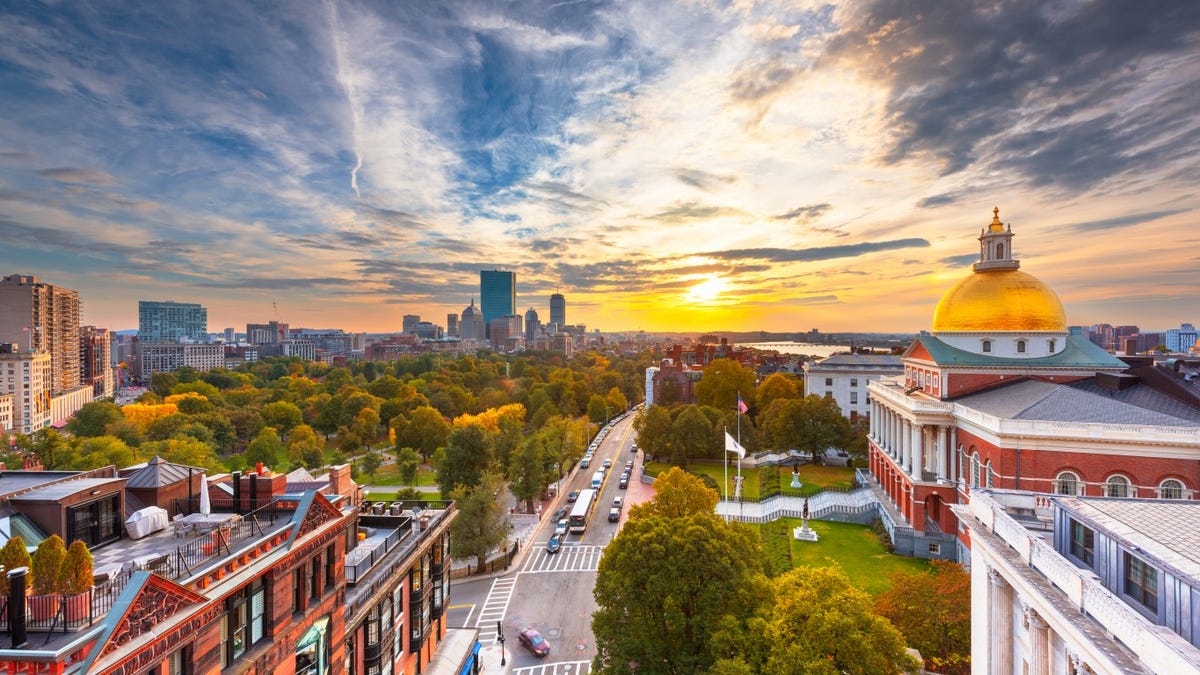After a
weeklong intensive workshop to brainstorm solutions to gun violence in Boston, Mayor Michelle Wu’s administration declared a goal Friday of
reducing homicides and shootings by 20 percent over the next three years.
The hope is to see fewer than 32 homicides a year by the end of 2026, said Isaac Yablo, Wu’s senior adviser for community safety.
It will be a significant feat for the city, which has not reached homicide numbers
that low since 1999. There were 31 murders in Boston that year
according to a federal crime database, a dramatic drop at the end of a decade that saw 143 homicides in 1990.
“Boston is building upon a very strong foundation, but we can go even farther,” Wu said at a breakfast Friday morning at the Roxbury Branch Library where she announced the city’s new antiviolence blueprint.
Boston was selected for the workshop by the University of Maryland’s Violence Reduction Center, which helps cities around the country craft plans backed by data and informed by residents’ experiences. The workshop’s problem-solving sessions focused on intervention techniques, such as teaching offenders to think before they act with cognitive behavioral therapy, or discouraging destructive behavior through environmental crime prevention.
“This [workshop] was meant to be a taste and a little bit of a starting point with some experts... [but] we fully intend to keep this going,” Wu said. “Boston knows best, in every way.”
The workshop concluded that gun violence in Boston is highly concentrated in small areas of larger neighborhoods, and that intervention efforts should primarily target those “hotspots.”
For example, Dorchester, the city’s largest neighborhood, is often labeled a high-crime area, when in reality many of the shootings occur within tiny pockets of the area. Helen Street, for instance, is a tiny side street off Talbot Avenue with a triple-decker home that police say has been
the epicenter of neighborhood gang activity in recent years.
Yablo cautioned against stereotyping entire neighborhoods as violent, saying that casual mention of “Dorchester, Roxbury, and Mattapan [as crime-ridden areas] helps to feed into that stigma that we are trying to debunk.”
While the final plan will not be approved and implemented until late June, city officials shared the violence intervention strategies that workshop participants agreed must be central to the work. Beefing up street outreach to those directly involved in gang violence and shootings was at the top of the list, as well as greater investment in hospital-based outreach such as the
Violence Intervention Advocacy Program at Boston Medical Center.
Yablo said participants also called on the city to centralize outreach efforts and help unite many of the prevention and intervention programs already taking place across Boston. The three-year timeline, he added, was a benchmark that everyone felt was both challenging but achievable.
At the breakfast, participants said like any goal for public improvement, time and money will be central to the success of the city’s new pledge.
“You can’t take a young man who’s been gangbanging, so to speak, all his life and expect him to change his mindset in 12 months, or 24 months. In some cases it may take years,” said Brother Donnell Singleton, a longtime outreach worker.
Singleton called on the city to allocate money wisely over the next three years, and conduct an audit “of every organization that’s received one penny” to determine what organizations are making a real impact.
“Stop giving them money if the audit says they’re not doing the work,” he said.
Yablo said that the city will begin to solicit feedback on the plan from the people and families impacted by gun violence through targeted “listening tours... to center the sub-communities and micro-populations” directly involved and “be specific about who we’re engaging.”
only to see him asking more people for money like half an hour later



 You sure about that 28%? I don’t see any black people when I go to Boston
You sure about that 28%? I don’t see any black people when I go to Boston


